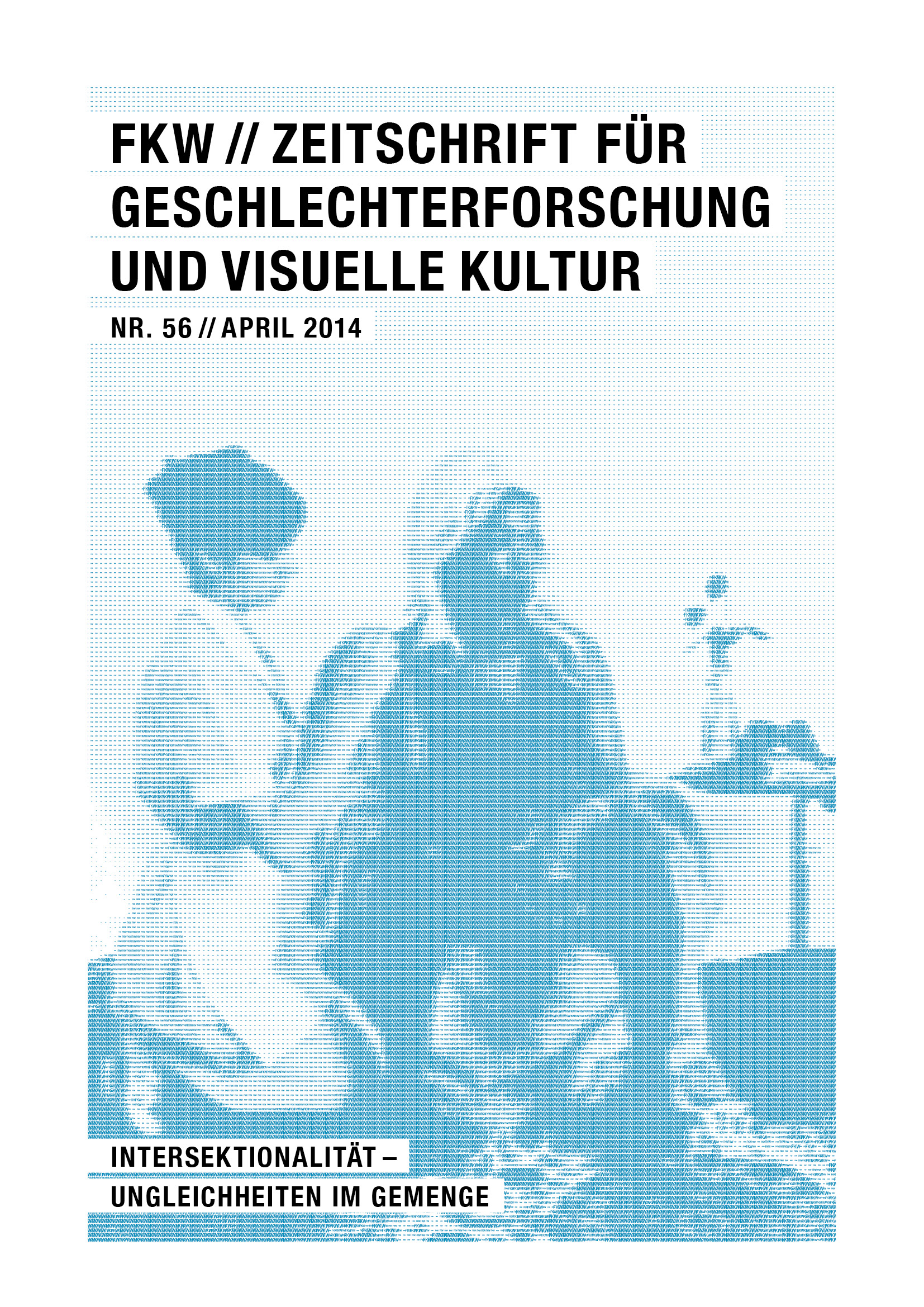The struggles of others. Yvonne Rainers Film 'Privilege' (1990) im Kontext ästhetischer und theoretischer Debatten um Intersektionalität
DOI:
https://doi.org/10.57871/fkw5620141287Abstract
In retrospect Yvonne Rainer commented on her film Privilege: „How could I in good conscience, as a white middle-class woman, portray working-class people of color, especially men? The script drove me half crazy to the point where I was ready to give up filmmaking and go back to school.“ The problem which Rainer expresses hereby concerns not only the aesthetic but also the political sphere. The text explores the relationship of both by contextualizing Rainers Film with contemporary examples from the visual arts (Cindy Sherman, Betye Saar et al.) and argues that the aesthetic strategy of these works as well as Rainers film can be adaequately described by referring to the theoretical concept of intersectionality.
Im Rückblick auf die Produktion ihres Films Privilege stellte Rainer sich folgende Frage: „How could I in good conscience, as a white middle-class woman, portray working-class people of color, especially men? The script drove me half crazy to the point where I was ready to give up filmmaking and go back to school.“ Das Problem, das Rainer hiermit zum Ausdruck bringt, beruht auf der Verknüpfung von politischem und ästhetischem Feld. Der Text beleuchtet diese Verknüpfung im Kontext zeitgenössischer Beispiele aus der bildenden Kunst (Cindy Sherman, Betye Saar u.a.) unter dem Begriff der Intersektionalität und argumentiert für eine Verwendung des Begriffs zur Analyse der erwähnten Verbindungen zwischen Ästhetik und Politik.
Downloads
Ausgabe
Rubrik
Lizenz
Die Autor_innen behalten das Copyright und treten keine exklusiven Nutzungsrechte an FKW ab.
Ab 2017 erscheinen alle Texte von FKW // Zeitschrift für Geschlechterforschung und visuelle Kultur unter der LizenzCC-BY-NC-ND Lizenz 4.0 International (Creative Commons, Namensnennung, Nicht Kommerziell, Keine Bearbeitung 4.0 International). Der Lizenzvertrag ist abrufbar unter: https://creativecommons.org/licenses/by-nc-nd/4.0/legalcode.de, eine allgemein verständliche Fassung unter: https://creativecommons.org/licenses/by-nc-nd/4.0/deed.de
Von 2013 bis 2016 sind alle Texte von FKW // Zeitschrift für Geschlechterforschung und visuelle Kultur unter der Digital Peer Publishing Lizenz (DPPL) erschienen. Der Lizenztext ist im Internet abrufbar unter der Adresse: http://nbn-resolving.de/urn:nbn:de:0009-dppl-v2-de3
Die Abbildungen in Ihrem Beitrag
Die Autor_innen verpflichten sich, die Abdruckgenehmigung für die in ihren Texten verwendeten Bilder bei der jeweiligen, die Bildrechte verwaltenden Institution einzuholen und die zuständige Herausgeberin über das Ergebnis zu informieren. Wir weisen darauf hin, dass die Verwendung von Bildern in wissenschaftlichen Texten gewöhnlich als Zitat angesehen und entsprechend kostenfrei gewährt wird.





